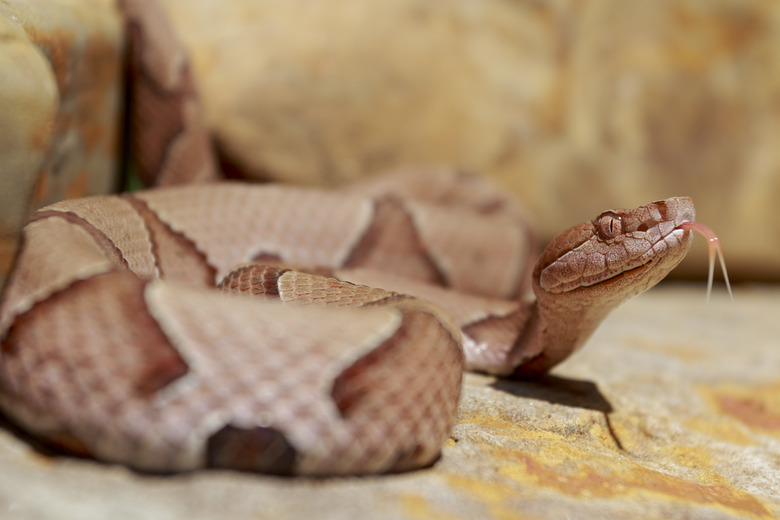Copperhead Snake Identification In Virginia
Virginia is home to three venomous snake species, including the copperhead. Copperheads are among the most populous venomous snakes in the Commonwealth State and the only venomous snake in northern Virginia. When they are young, copperheads feature yellow-colored tails and gray bodies. However, when copperheads mature into adulthood, their bodies and tails darken.
Physical Description
Physical Description
As its name suggests, the copperhead has light brown or copper-colored scales with dark brown splotches sporadically spread on its body. These snakes grow between 2 to 3 feet on average, but some specimens have reached lengths of 4 feet. Copperheads have an hourglass shape; the sides of copperheads are wide, while the dorsal region of these snakes are narrow. These snakes are venomous and have fangs within their mouth for injecting their venom. Like other venomous snakes, the copperhead features a single row of scales after its anal plate; after their anal plates, nonvenomous snakes have dual rows of scales.
Habitat
Habitat
Copperheads live in rural and urban environments. These venomous snakes are able to live in the Appalachians and Blue Ridge Mountains; these mountain ranges have elevations of approximately 3,000 to 5,000 feet in Virginia. Copperheads dwell in rural environments such as wetlands, forests and grasslands; copperhead sightings also occur at the edge of forests. When copperheads are in grasslands regions, the grasslands usually has a high concentration of rocks; the copperheads use rocks to seek shelter. Old barns, stone walls and abandoned buildings are some urban settings where copperheads live.
Pit Viper
Pit Viper
Copperheads are also known as pit vipers. Pit vipers are snakes that have a heat-sensitive pit between their eyes and nose; these snakes have two pits, one on each side of its head. During the evening, pit vipers use these pits to sense the heat of mice and rats, which are the snakes' warm-blooded prey. Pit vipers also have triangular-shaped heads. All pit vipers in the southeastern states, including Virginia, are venomous. The most common snakebite from pit vipers comes from the copperhead, according to the University of Georgia.
Northern vs. Southern
Northern vs. Southern
Two subspecies of copperheads live in Virginia, the northern copperhead (Agkistrodon contortrix mokasen) and southern copperhead (Agkistrodon contortrix contortrix). Both subspecies are common throughout Virginia. However, copperheads are not found in Virginia's Barrier Islands region on the Atlantic Ocean. The northern and southern copperheads have similar physical characteristics regarding their heads, eye pupils and fangs. However, the southern copperhead has a more pinkish coloration than the northern copperhead. Also, the dorsal markings of northern copperheads are wider than the southern subspecies.
Cite This Article
MLA
Davis, Skip. "Copperhead Snake Identification In Virginia" sciencing.com, https://www.sciencing.com/copperhead-snake-identification-virginia-8647508/. 22 November 2019.
APA
Davis, Skip. (2019, November 22). Copperhead Snake Identification In Virginia. sciencing.com. Retrieved from https://www.sciencing.com/copperhead-snake-identification-virginia-8647508/
Chicago
Davis, Skip. Copperhead Snake Identification In Virginia last modified March 24, 2022. https://www.sciencing.com/copperhead-snake-identification-virginia-8647508/
